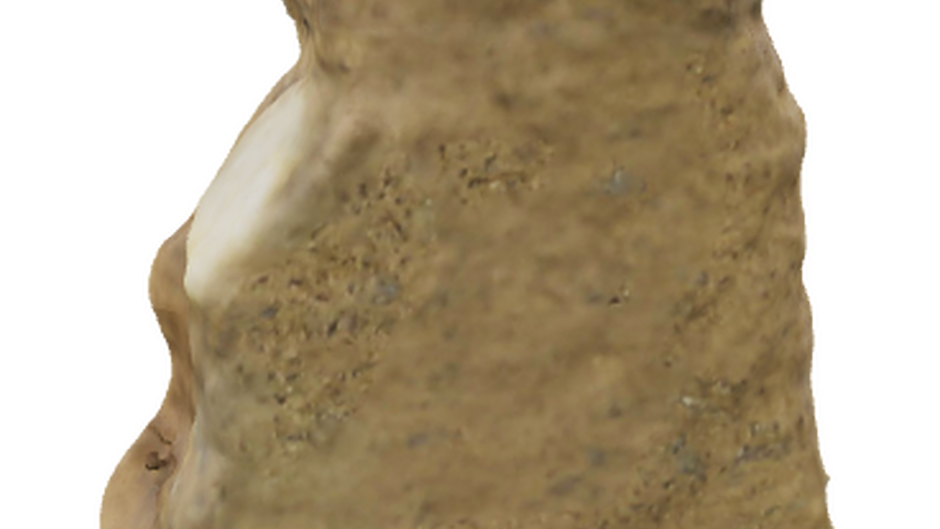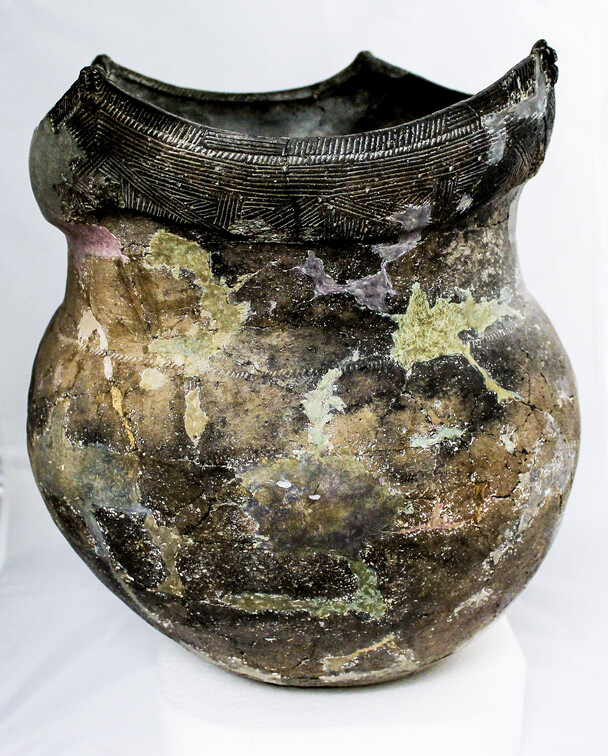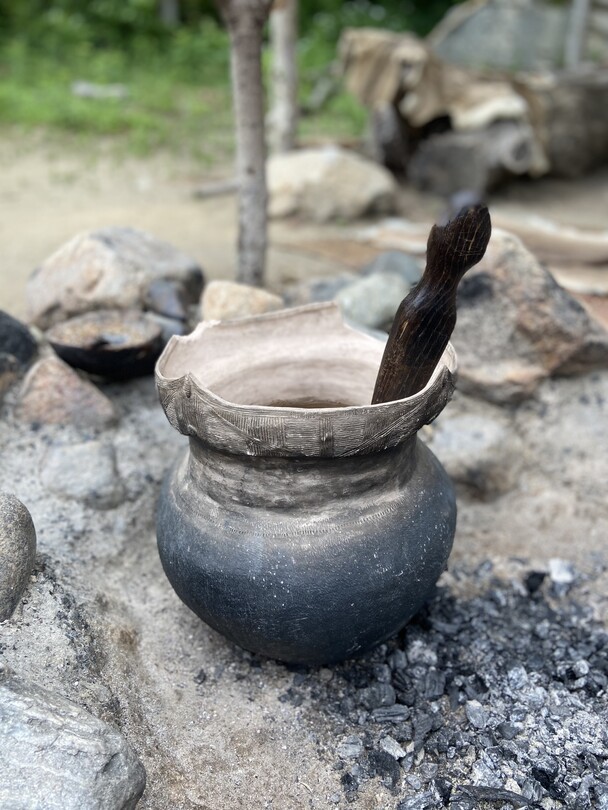Wampanoag Pottery Sherd
Object ID: 19PL522.1977
- Date
- Early-Middle Woodlands Period (3,000-1,000BP)
- Material
- Earthenware
- Author/Maker
- Artist’s name is no longer known.
- Source
- Plimoth Patuxet Museums Archaeology Collection
Description
The Early to Middle Woodland Period was characterized simultaneously by the development of long-distance trade networks and the growth of more densely populated areas as people settled into permanent communities. Despite settling down, however, they still moved seasonally and returned to the same locations year after year to acquire resources. During this time, Wampanoag women transitioned from trading for steatite (soapstone) cooking vessels to producing their own earthenware pottery from locally sourced clay. These bowls were lighter and easier to work with than soapstone bowls. With their round bottoms, they could stand upright when pushed into the earth or supported by rocks over the coals of a fire.
Women made clay pots in a variety of sizes for cooking and other household uses. Boiling was a simple, effective way to cook large quantities of food with minimal effort, and soups and broths still make up a significant portion of the traditional Wampanoag diet today. Small stones supported the round-bottomed pot over a small fire which helped evenly distribute and retain the heat. Thomas Morton described local Massachusett culture in his book New English Canaan (1637): “they have earthen potts of diverse sizes, from a quart to a gallon, 2. Or 3. To boil their vittels in; very strong, though they be thin like our Iron pots."1 Decades later, Daniel Gookin added: "The pots they seeth their food in, which were heretofore, and yet are, in use among some of them, are made of clay or earth, almost in the form of an egg, the top taken off, but now they generally get kettles of brass, copper, or iron.”2
Distinctive features of Wampanoag pots include castellated or peaked rims, most with two or four peaks. Pots were decorated by incising and impressing designs or patterns into the clay before they were fired. To prevent pots from shrinking or breaking when fired, Wampanoag potters still temper their pots by adding stone, sand, or fine gravel.
Media
Touch the screen or use your mouse to manipulate the archaeological artifact. What do you notice when you look closely?
Discussion Questions
- How do our cooking pots today compare to traditional Wampanoag cooking tools?
- Why do you think Wampanoag women stopped trading for stone bowls and started making their own?
- How did the introduction of locally-made pottery change daily life for Wampanoag women?
- What impact did the establishment of semi-permanent communities have on the development of new technologies and art forms such as pottery?
- How is the transition from soapstone to clay an example of technological evolution?


